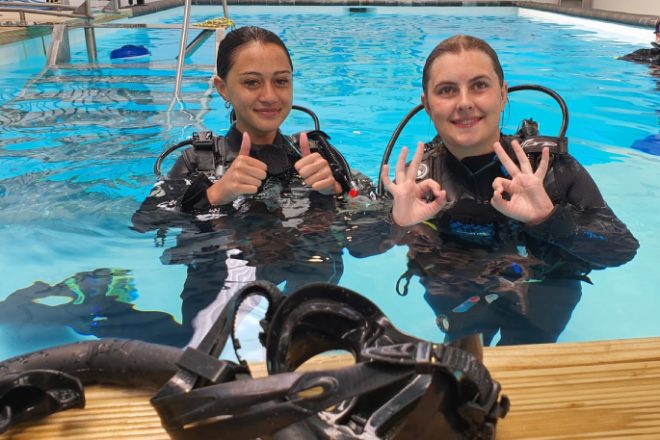Ang mga kabataan sa Western Bay of Plenty ay binigyan ng pagkakataon na matuto ng scuba diving, salamat sa kabaitan ng mga lokal na hindi kilalang tao. Inihayag ng regional manager ng Graeme Dingle Foundation, si Dan Allen-Gordon, na limang kabataan mula sa Project K at apat mula sa programang Big Buddy ang natutong mag-scuba dive. Nagawa ito posible sa pamamagitan ng pagkolekta ng pondo ng isang negosyo sa pagtuturo sa Tauranga diving.
Kamakailan lamang sinimulan ng mga kabataan ang kanilang PADI open water dive course. “Hindi nila maiisip ang maging divers,” sabi ni Allen-Gordon. “Ngayon ay maaari silang maglakbay sa mundo upang sumisid at marahil ay magturo pa sa iba.” Naniniwala siya na ang Project K, na sinimulan noong 1995 nina adventurer Sir Graeme Dingle at Jo-Anne Wilkinson, ay nakakatulong upang bumuo ng kumpiyansa at katatagan sa mga kabataan.
Ang Dive Zone Tauranga, ang negosyo ng pagtuturo sa diving, ay nakalikom ng sapat na pera sa pamamagitan ng kampanya na ‘pay it forward’ sa kanilang website upang i-sponsor ang siyam na kabataan upang makilahok sa isang libreng entry-level scuba diving course noong nakaraang buwan. Sinabi ng may-ari ng Dive Zone na si Liz Plank, “Lumilikha ng mga alaala ang aming pool, kaya hiniling namin sa aming mga kliyente na mag-donor upang ang mga hindi karaniwang makakakuha ng pagkakataon ay makikinabang dito.”
Ang isa sa mga estudyante, si Mia Donaldson, ay nasasabik na matutong mag-surf. “Ito ay isang mahusay na pagkakataon. Medyo nakakatakot ang pag-aaral kung paano kontrolin ang lahat sa tubig ngunit mabuti ito,” sabi niya. Kinilala ni Plank na ang gastos ng kurso sa dive ay maaaring maging ipinagbabawal para sa maraming tao. Gayunpaman, ipinagmamalaki niyang mag-alok sa mga kabataang ito ng pagkakataon na matutong sumisid at inaasahan na makakagawa ng higit pa sa hinaharap. Upang magbigay ng donasyon para makakuha ng higit pang mga bata sa Project K sa dive course, bisitahin ang website ng Dive Zone Tauranga.



















































-360x245.jpg)









